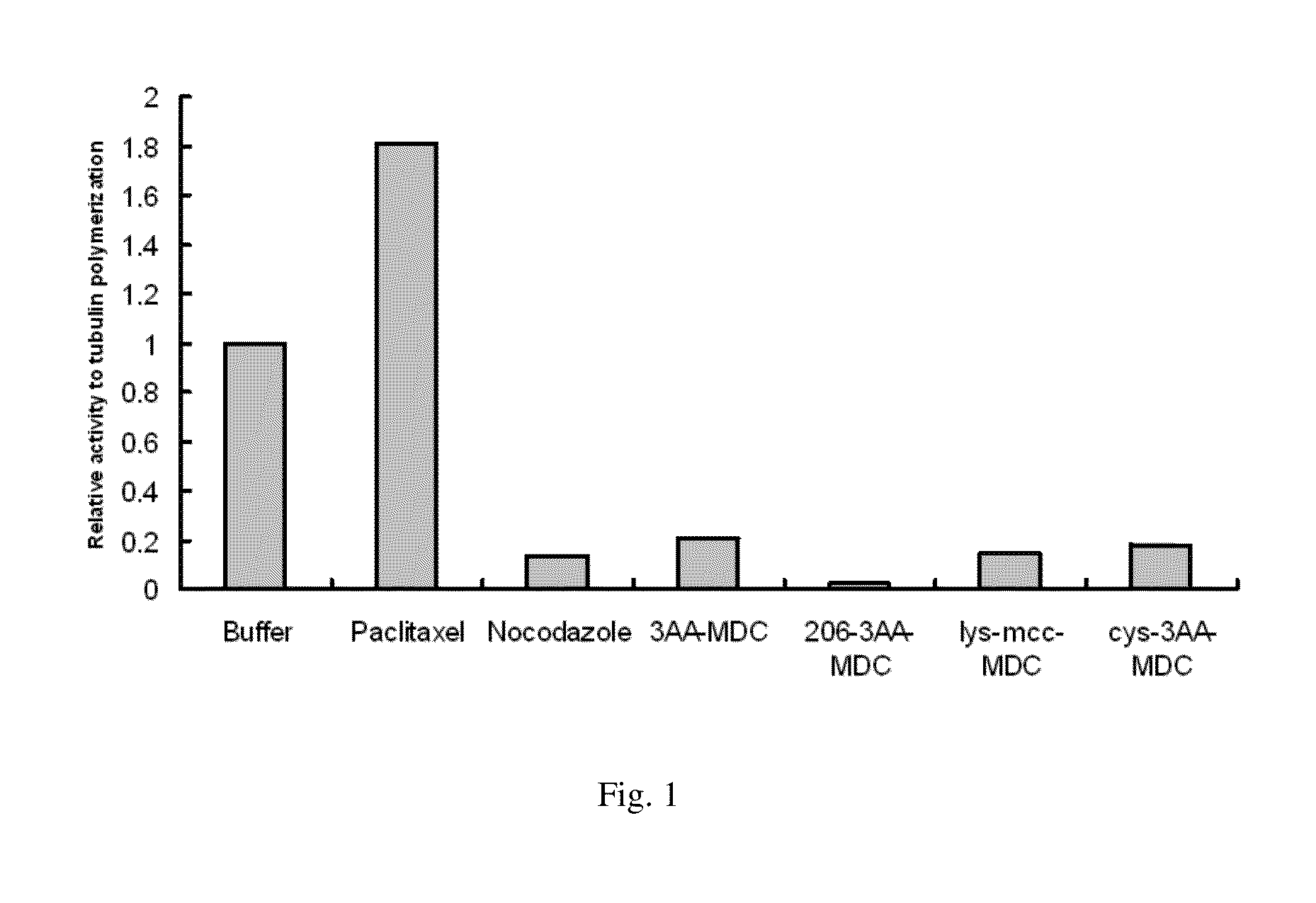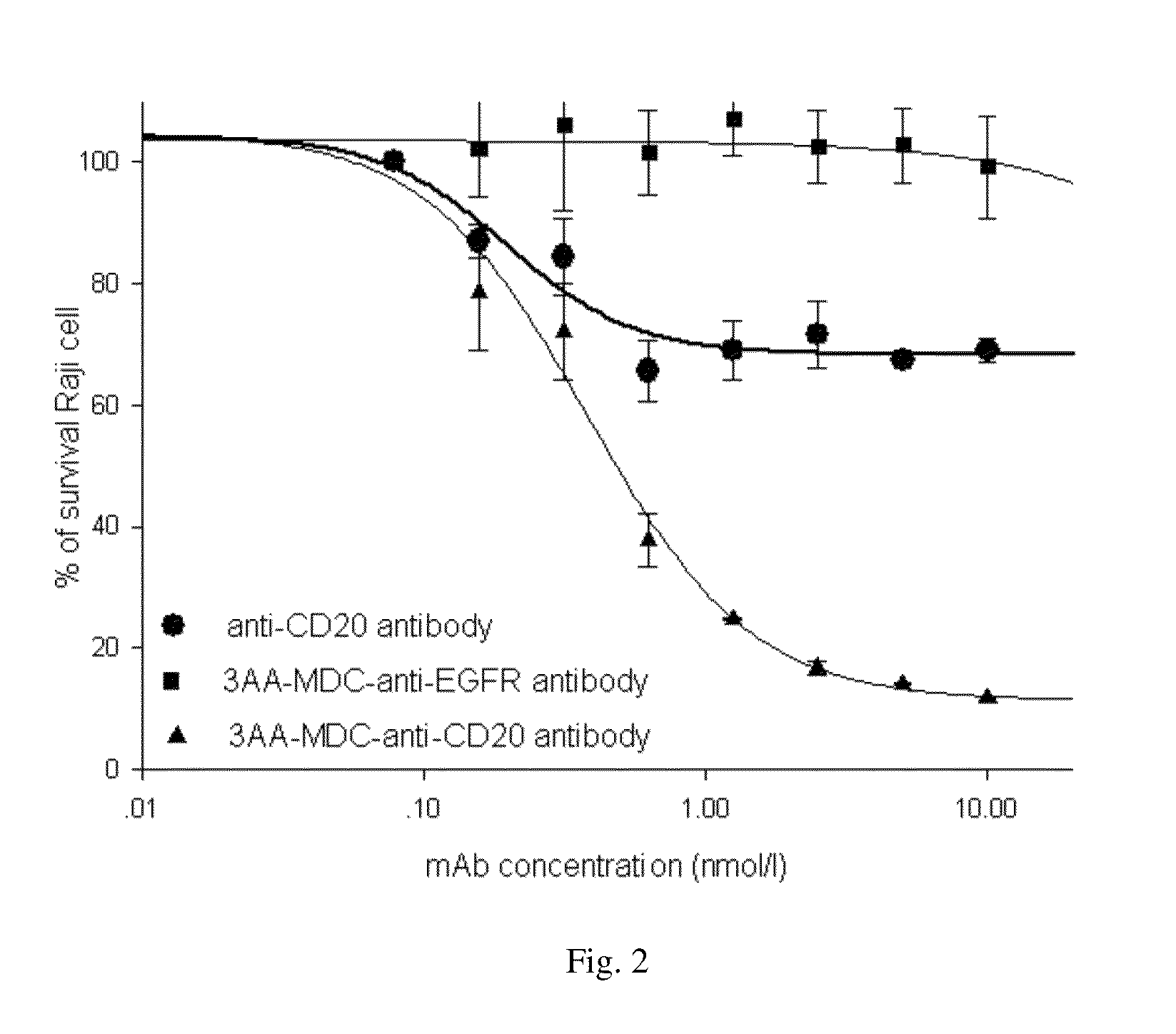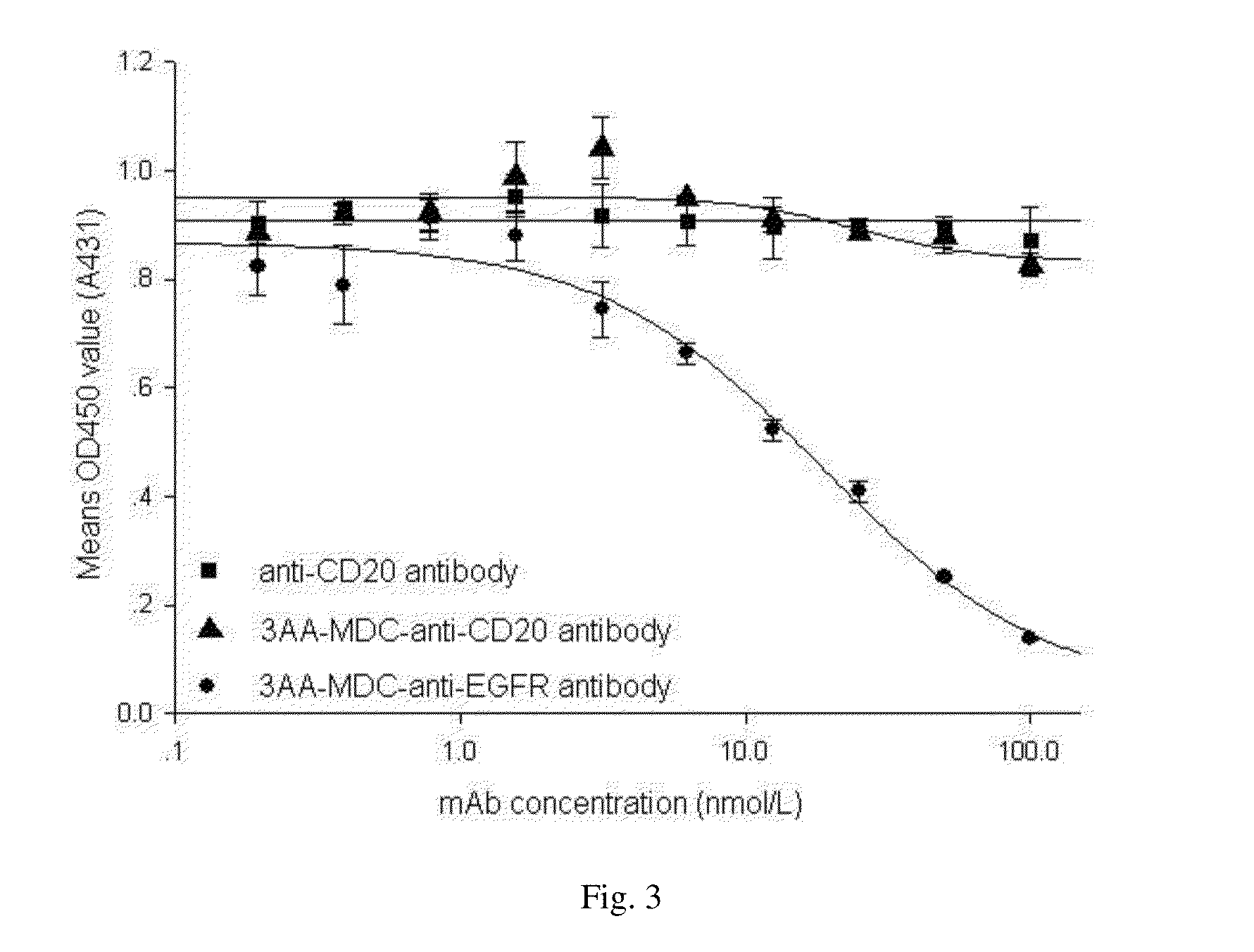Compounds and methods for the treatment of cd20 positive diseases
a technology of cd20 and compounds, applied in immunology disorders, metabolism disorders, antibody medical ingredients, etc., can solve the problems of high and often unacceptable toxicity, and achieve the effects of preventing recurrence of cd20-positive cancer, reducing the undesirable side effects of maytansinoid, and reducing the toxicity
- Summary
- Abstract
- Description
- Claims
- Application Information
AI Technical Summary
Benefits of technology
Problems solved by technology
Method used
Image
Examples
example 1
Recombinant Antibody Expression and Purification
[0158]In all the following examples, the genes consisting of the amino acids of rituximab was used in expression and the purified proteins was used in the preparation for the anti-CD20 antibody drug conjugates. The anti-CD20 antibody, specifically binding the extracellular domain of CD20, was produced in CHO cells essentially as described in Wood et al., J. Immunol. 145:3011 (1990). Briefly, each of the antibody genes were constructed with molecular biology techniques (Molecular Cloning: A Laboratory Manual, 3rd edition J. Sambrook et al., Cold spring Harbor Laboratory Press). A derivative of Chinese hamster ovary cell lines CHOK1 was grown in CD-CHO media (GBICO). Transfections were facilitated using electroporation. Healthy mid-log CHO-K1 cells were pelleted by centrifuge and were resuspended in fresh CD-CHO media to achieve cell densities of approximately 1×107 cells (600 mL) per cuvette. Suspensions of cells containing 40 μg of lin...
example 2
Conjugation of Anti-CD20 Antibody with SMCC-MDC
[0160]The drug-linker SMCC-MDC was prepared in the following reactions: (1) 3-mercaptopropanoic acid (MPr) was reacted with N-succinimidyl 4-(maleimidomethyl)cyclohexane-1-Carboxylate (SMCC) in the presence of N,N-diisopropylethylamine (DIEA), giving the MPr-SMCC at a yield of over 95%; (2) condensation of N-Me-L-Ala-MDC, which was prepared by deprotection of Fmoc-N-Me-Ala-MDC under a base piperidine in CH3CN, with MPr-SMCC under a coupling reagent EDC, giving the desired coupled product SMCC-MDC in 60-70% yield over two steps. Anti-CD20 antibody was diluted to 2.5 mg / mL in solution A (50 mM potassium phosphate, 50 mM NaCl, and 2 mM EDTA, pH 6.5). SMCC-MDC was added to give a ratio of SMCC-MDC to antibody of 7:1 mole equivalent. Then DMA (dimethylacetamide) was added to 15% (v / v) to the reaction and reaction was mixed by stirring for 4 h at ambient temperature. D-Lmcc-Anti-CD20 antibody conjugate was purified from excess unreacted or hy...
example 3
Esterification of Maytansinol with Fmoc-N-Methyl-L-Alanine (Fmoc-N-Me-D / L-Ala-MDC)
[0161]
[0162]A mixture of maytansinol (0.600 g, 1.062 mmol), Fmoc-N-Me-L-Ala (6.911 g, 21.24 mmol), Sc(OTf)3 (0.314 g, 0.637 mmol) and DMAP (0.389 g, 3.186 mmol) in CH2Cl2 (100 mL) was stirred for 0.5 h at −8° C. DIC (2.949 g, 23.37 mmol) was added dropwise, stirred for 0.5 h, warmed to r.t. slowly, filtered to recover the Lewis acid catalyst, the filtrate was quenched with diluted HCl and extracted with CH2Cl2. The combined organic phase was washed with NaHCO3 aq, brine, dried over anhydrous Na2SO4. The solvent was removed under reduced pressure. Chromatography (silica gel, CH2Cl2 / MeOH 30:1) gave the desired product as a mixture of diastereomer Fmoc-N-Me-D / L-Ala-MDC: white solid (0.8385 g, 90.5%). Further column chromatography (silica gel, CH2Cl2 / MeOH 100:1 to 20:1) gave two fractions as pure diastereomer. The higher Rf fraction was determined to be the D-aminoacyl ester diastereomer (Fmoc-N-Me-D-Ala-M...
PUM
| Property | Measurement | Unit |
|---|---|---|
| concentration | aaaaa | aaaaa |
| concentration | aaaaa | aaaaa |
| concentration | aaaaa | aaaaa |
Abstract
Description
Claims
Application Information
 Login to View More
Login to View More - R&D
- Intellectual Property
- Life Sciences
- Materials
- Tech Scout
- Unparalleled Data Quality
- Higher Quality Content
- 60% Fewer Hallucinations
Browse by: Latest US Patents, China's latest patents, Technical Efficacy Thesaurus, Application Domain, Technology Topic, Popular Technical Reports.
© 2025 PatSnap. All rights reserved.Legal|Privacy policy|Modern Slavery Act Transparency Statement|Sitemap|About US| Contact US: help@patsnap.com



